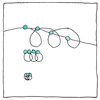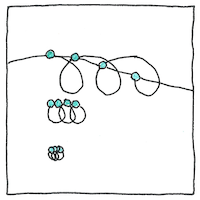George Gabriel Stokes
fluid dynamics

|
Stokes drift
A wind that blows from west to east across the surface of a sea moves a particle near the surface in a sinusoidal path from trough to crest and crest to trough in the direction of the wind. This is Stokes drift, the average effect of a periodic sequence of nonlinear waves traveling across an inviscid fluid, such as seawater, or a planet’s atmosphere, or the electron charge density of a plasma.
The base of a wave
In deep water, under periodic waves, particles move in a circular path. The diameter of a circle at the surface is the vertical distance between the crest and the trough of the waves. A particle below the first circle transcribes a smaller circle, with smaller and smaller circles are transcribed for deeper and deeper particles until the path is diminished to a point
Consequences
upon which a wave stands when its base reaches and rolls onto the face of the shore which explains its curve and its rising up and its collapse
Molecules
Molecules of air churn molecules of seawater against each other, against the earth, against the moon, and push enough to move the oceans.



Impacts of atoms move oceans. Even though each water molecule prefers sticking with its neighbors, they are easily churned and pushed by the wind while they are pulled toward the center of the earth and around the planet toward the moon. Effects of temperature are huge; air temperature differences move gases from high to low pressure areas, and similar differences move liquids around the continents between polar and equatorial areas.
See also in The book of science:
Readings in wikipedia: